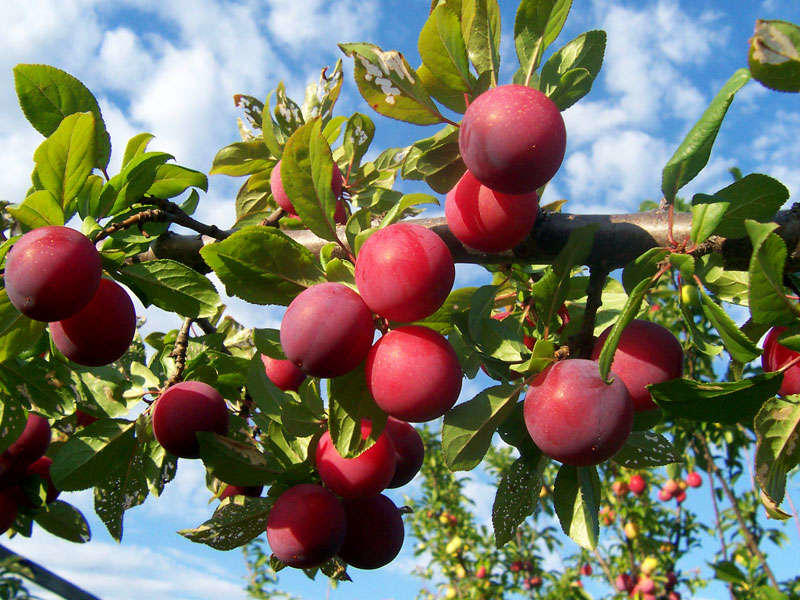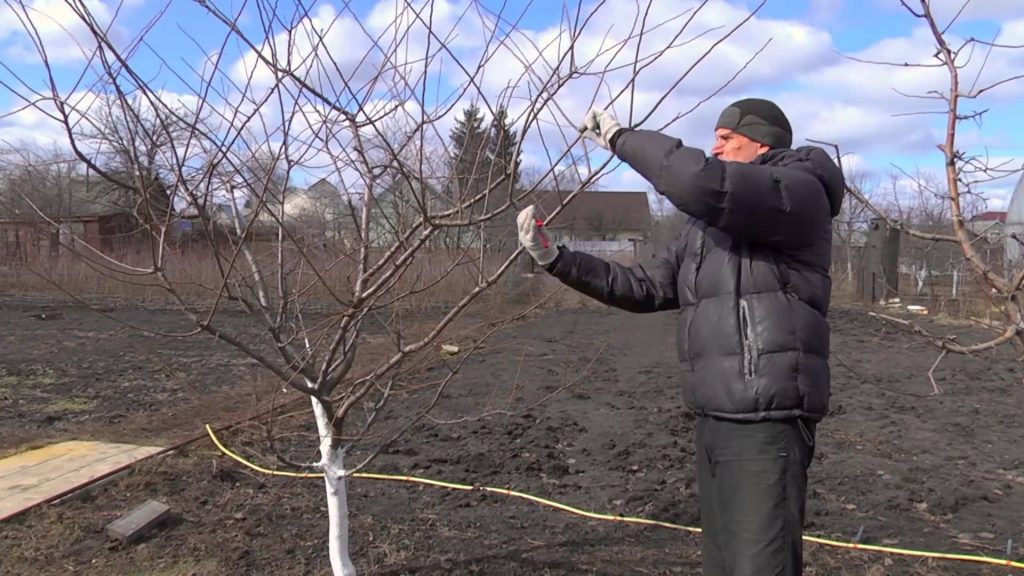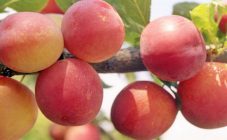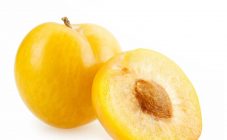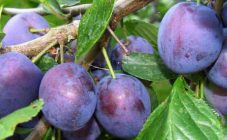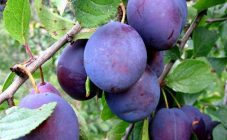Content:
One of the garden berries that is actively used in cooking is the plum. It is eaten fresh and used in the preparation of desserts, sweet dishes and preservation; it is rich in vitamins and minerals. Currently, there are a huge number of varieties of plums, adapted to different climatic conditions. One of the Chinese representatives is the Chinese plum Alyonushka.
History of creation
It has nothing to do with China, it was bred by crossing plums of the varieties Chinese and Red Ball at the Research Institute of the Russian Federation for the selection of fruit crops. The main work was carried out by scientists-breeders G.B. Zhdanova and A.F. Kolesnikova. Its zoning for the Central Black Earth regions took place later, in 2001. Good winter hardiness makes it possible to obtain a stable harvest in Belarus, Ukraine and countries similar in climate.
Description of the variety
Plum Alyonushka variety description:
- Wood. Plant height reaches 2.5 m, belongs to the group of medium-sized varieties. The crown is of medium density, has the shape of a pyramid, the branches are raised.
- Shoots without pubescence, their color is red-brown, erect.
- The buds are medium in size, cone-shaped.
- The leaves grow on an insignificant stalk of medium thickness, which is weakly pigmented. The color of the leaf is light green, the shape is oblong, the tip is pointed, there are teeth on the sides.
- Flowers are collected in three in an inflorescence, for which it was named three-flowered. Bell-shaped calyx, white petals. The length of the stamens is up to 5.5 mm, the corolla is up to 8 mm.
- Fruits are large, weighing up to 40 g, dark pink or red on top, covered with a light bloom. The pulp is fragrant, dense, orange in color, rich in juice. Taste quality is excellent, gaining 4.8 points out of 5 possible.
The first berries can be picked already in the third year of life. Flowering begins in early May, when the leaves have not even blossomed yet. The plant is completely covered with white flowers and has a very beautiful appearance at this time. The plum is early ripening, fruit ripening begins in the second decade of August. Upon reaching maturity, the tree will produce a stable harvest.
The fruits were highly appreciated for their taste. Many people compare its taste to that of a peach. The peel of the fruit, although thin, is quite dense - it does not crack even when overripe. The fruits contain a lot of sugars - 8.77%.
Planting and leaving
It is best to plant plums on the site in the fall. When planting, it should be borne in mind that for good growth and a stable harvest, Alenushka must be grown in open sunny areas. The groundwater should be low, it is best if it is planted on a hill. The variety is quite picky about the quality of the soil, as a result of which the territory for planting is prepared in advance.
The plot allocated for cultivation is dug up a month before the expected planting date, weeds are destroyed. If the acidity of the soil is increased, then the site is limed.
At the same time, they organize a place for planting pollinating varieties according to the same scheme, while maintaining a distance between trees of 3 meters and between rows - 5.
Landing scheme:
- 1) Dig a hole up to 50 cm deep and the same width.
- 2) Pour 2 buckets of last year's manure.
- 3) Add 0.5 buckets of dolomite flour.
- 4) Ash, superphosphate and potassium sulfate - 0.2 kg each.
- 5) The resulting composition is mixed and leveled.
- 6) Sprinkle with ordinary earth on top, on which the tree is placed.
- 7) The root system is carefully covered with fertile soil.
- 8) Make sure that the root collar is covered by 2-3 cm.
- 9) The final stage of work is watering and mulching.
- 10) To facilitate the survival of the seedling, watering should be regular in the first month so that the soil does not have time to dry out. In the future, watering is reduced.
- 11) For a successful wintering in order to prevent podoprevanie bark, it is necessary to tie the trunk with branches of a Christmas tree.
The next year after planting, it is important to properly care for the tree. In the spring, nitrogen fertilizing is carried out. For this, ammonium nitrate is used, it can be replaced with urea. In the spring, the first pruning is carried out, the purpose of which is to form a crown, the main trunk is partially shortened, then the lateral shoots are trimmed, they should be below the trunk.
In the summer, additional feeding is also necessary, there should be at least two of them. Take a mixture of potassium-phosphorus fertilizers with a small amount of ash. Make 15 liters of solution per 1 tree, fertilizer is taken at the rate of 40 grams. for 5 liters of water.
The important work is the usual weeding and loosening of the entire area under the tree. Regular watering is required, every 20 days, 15 liters of water are spent on 1 tree. In hot and dry weather, the frequency increases.
An important step is the treatment against pests and diseases, which is carried out in the spring. After that, throughout the summer-autumn period, the tree is inspected for weakened and frozen branches. They are removed immediately.
Care does not require large physical and material costs. If the work is carried out within the allotted time, then the plum will delight with a stable harvest.
Advantages and disadvantages
The ease of caring for the plum Alyonushka is accompanied by a large number of advantages:
- High frost resistance, withstands winters with temperatures down to -37 degrees.
- A stable harvest, no record harvests have been recorded, but with proper care it pleases every year.
- Small decorative tree.
- The fruits are large: the weight of the fruit is up to 40 g, with a dense skin that does not undergo cracking.
- High taste - scores 4.8 points out of 5.
- They are practically not affected by clasterosporium and moniliosis.
Don't forget about the disadvantages:
- Self-infertility. In order to get a harvest, it is necessary to grow pollinating varieties in the immediate vicinity.
- It is susceptible to the attack of the plum pest - aphids, which does great harm to the leaves and fruits of the tree. In this case, the leaves curl, lose color and stop growing. Great damage is done to the tree, which, if you do not help it, will die.
In general, the plum Alenka has many positive reviews among gardeners who appreciate it for its ease of care and excellent taste.
